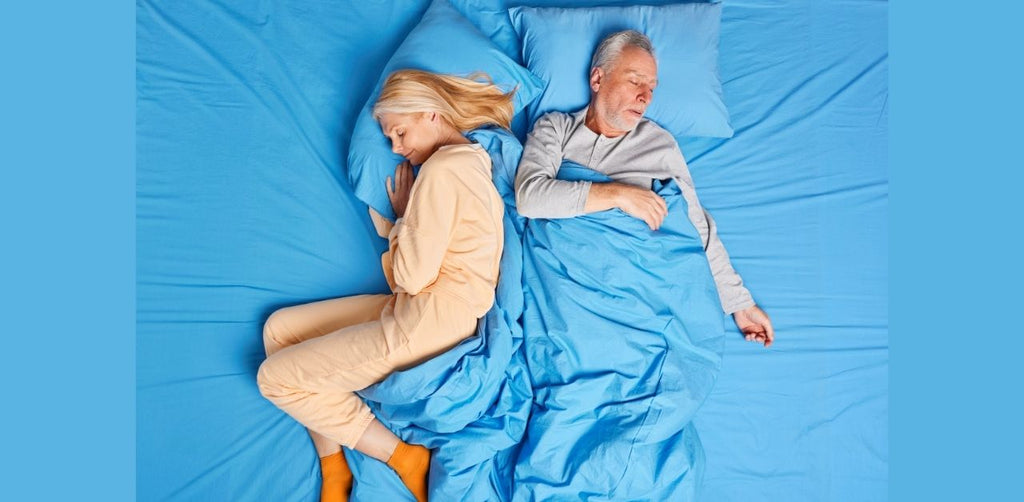Best Sleep Position to Increase Oxygen Levels
If you've ever wondered about the how to increase oxygen levels while sleeping, then this blog post is for you After conducting a series of tests and observing common trends among people using supplemental oxygen during sleep, we have some interesting insights to share.
We understand that everyone has their own preferred way of sleeping. Some love hugging their pillows; others like stacking them up or choosing either thicker or thinner ones. We initially introduced a pillow product but soon realized that it might not cater to all these diverse preferences. Therefore, instead of focusing on products, let's delve into understanding how different sleeping positions can affect you and increase oxygen while sleeping.
Discover how the right sleep system can transform your breathing. Nighttime Sleep Oxygen System
The Back Sleepers Dilemma
The first major category is back sleepers which doesn't include many individuals with breathing issues such as COPD (Chronic Obstructive Pulmonary Disease). The primary reason being when you lie on your back, both your throat and tongue fall backwards causing an obstruction in airflow, increasing the risk of hypoxia and conditions like obstructive sleep apnea.
Besides this anatomical issue, lying flat on your back also means fighting against gravity to breathe which can be particularly challenging if one already has respiratory problems. Hence most people relying on supplemental oxygen tend towards side and stomach sleeping positions.
The Benefits of Side and Stomach Sleeping Positions
Side or stomach sleeping positions are generally promoted by health experts because they help open up the airway more efficiently than other positions, thereby increasing the ease of breathing during sleep. Another advantage is that when lying sideways or face down gravity actually assists respiration rather than hindering it thus promoting better circulation of oxygen throughout the night [1]
Improve your side sleeping experience with the Oxyllow Sleep Oxygen Pillow System.
Best Sleeping Position for Breathing?
You might find it odd but there are quite a few who prefer sitting-up position while asleep especially those seeking better oxygenation at night according to Anthems blog posts [2]. Surprisingly enough research supports this practice too! Studies have shown that elevating head-end by 20-30 degrees helps in keeping airways open during sleep thus improving overall quality of rest through enhanced respiration [3].
This does not mean resorting only recliner chairs though! You could simply place additional pillows under yourself for elevation or even consider investing adjustable beds which allow flexible positioning options tailored specifically individual needs preferences!
The Impact of Sleep Position on Blood Oxygen Levels
Warning Signs of Inadequate Oxygen During Sleep
-
Waking up with a headache: Low oxygen levels can cause blood vessels in the brain to expand, leading to morning headaches.
-
Waking up frequently during the night: Oxygen deprivation can disrupt sleep cycles, even if you don’t remember waking up.
-
Snoring or sleep apnea: Snoring or obstructive sleep apnea restricts airflow, making it harder to maintain proper oxygen levels.
-
Restless sleep: Tossing and turning may indicate your body is struggling to get adequate oxygen and is trying to find a better position for airflow.
-
Morning fatigue: Oxygen fuels tissue repair and organ function overnight. A lack of oxygen can leave you feeling drained when you wake up.
-
Poor concentration and focus: Oxygen is vital for brain function. Low oxygen saturation at night can impair cognitive performance during the day.
Tips for Improving Oxygen Flow During Sleep
-
Sleep on your side or in an elevated position: Side sleeping or slightly elevating your head and chest can help keep airways open.
-
Use a humidifier: Adding moisture to the air helps reduce congestion and promotes better airflow.
-
Practice diaphragmatic breathing before bed: Deep breathing exercises can improve oxygen saturation and support lung function.
Improve Your Oxygen Levels with the Oxyllow® System
Sleeping on your side or in an elevated position can help improve oxygen flow. The Oxyllow® System is designed for side sleepers, offering a comfortable, cannula-free way to support better breathing at night.
✔ Side-sleeper friendly for uninterrupted airflow
✔ Comfortable alternative to traditional oxygen delivery
✔ Easy to use with standard oxygen concentrators

